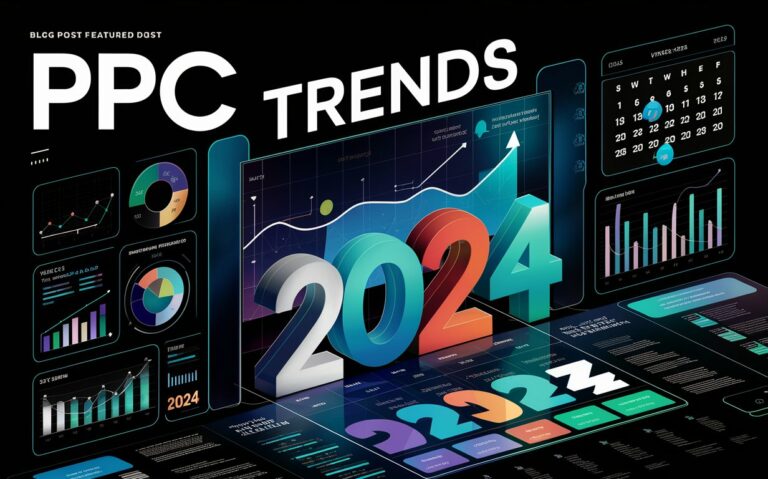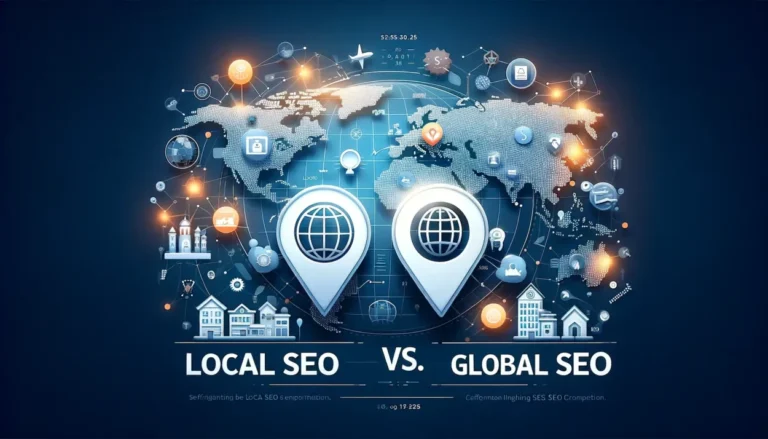In the bustling marketplace of today’s economy, branding stands like a lighthouse, guiding the consumer ships through a sea of endless choices. It is the whisper of a name that brings a story to life, a harmonious blend of colors, shapes, and words that dance together to form a memorable image in the public’s eye. Branding isn’t just a logo or a catchy jingle; it’s the emotional and psychological relationship between a company and its audience. As such, it is often shrouded in myths and misconceptions that can cloud the understanding of its true essence.
Picture a tapestry of experiences and expectations, each thread representing a different aspect of branding, intricately woven together to create a cohesive narrative. The truth about branding lies not just in the visible threads but also in the subtle nuances that are felt rather than seen. It’s a multifaceted concept, often mistaken for mere advertising or sales strategy, but in reality, it’s the heartbeat of a business, pulsing through every interaction, shaping perceptions, and building loyalty. This article seeks to untangle the common myths, providing clarity to the often misunderstood art and science of branding.
Branding Missteps: How Negative Associations can Tarnish Reputation
Negative word-of-mouth behaves like a contagious blight, spreading rapidly and embedding itself in the fabric of a brand, transforming perceptions with whispered tales of dissatisfaction. This insidious phenomenon, known as negative wordofmouth reputation, can swiftly overshadow any positive branding efforts. Meanwhile, donning the mantle of the worse employer reputation is akin to a brand shooting itself in the foot, crippling its ability to attract top talent and casting a long, dark shadow over its corporate identity. Understanding the effects of negative feelings on brand perception is crucial; they simmer beneath the surface, eroding trust and loyalty with corrosive potency.
What Negative Word-of-Mouth Does to Your Brand
As the conversation shifts, imagine a ripple effect, where each wave represents the whispers of discontent spreading far and wide, impacting the perception of a brand. What then, does negative word-of-mouth do to your brand? It acts like a silent saboteur, stealthily undermining the foundation of trust and credibility painstakingly built over the years.
When customers start to murmur about their disappointments, these murmurs can quickly crescendo into a deafening roar of disapproval. Wrong branding choices can spark this transition, leading to a cascade of skepticism. Each shared story of dissatisfaction serves as an invisible brushstroke, painting a less-than-ideal picture of the brand in the collective marketplace’s canvas.
The potency of such adverse chatter cannot be understated; it seeps into the psyche of potential customers, often deterring them from engaging with the brand. In a world where opinions are amplified through the megaphone of social media, a single instance of wrong branding can trigger a relentless tide of negative buzz, effectively dimming the brand’s once radiant aura.
The Consequences of Being the Worse Employer
As we navigate away from the bustling marketplace of public opinion, we stumble upon an often undervalued facet of brand identity—employment practices. Imagine a company’s name becoming synonymous with a revolving door, where tales of unfavorable work conditions and dissatisfied employees spill into the streets, tainting the air with whispers of discontent.
Each disgruntled departure sends ripples through the industry pond, casting shadows on the brand’s facade. The consequences of being labeled as an unfavorable place to work are multifaceted and insidious. Potential talents, once eager to contribute their skills, now divert their paths to avoid the cloud of dismay hovering over the company. Current staff morale withers, productivity declines, and the once vibrant innovation hub transforms into a desolate landscape of minimal effort and enthusiasm.
Moreover, customer perception shifts; the knowledge of internal strife bleeds into public consciousness, prompting patrons to reconsider their loyalty. They begin to see the brand not as a beacon of quality, but as a derelict ship, unworthy of their patronage.
Understanding the Effects of Negative Feelings on Brand Perception
As we sail further into the intricate sea of brand dynamics, let’s explore the subtle yet profound ripples caused by unfavorable brand associations. Picture a serene pond, where each brand floats like a delicate lotus, exuding its unique fragrance. Now, imagine a stone of discontent tossed into this still water; the ripples distort reflections, marring the previously pristine image. This is the essence of unfavorable sentiments toward a brand.
When dissatisfaction or dismay whispers through the grapevine, it paints a brand’s perception with broad, unflattering strokes. The once glowing halo that adorned the brand’s visage dims, overshadowed by the murkiness of consumer skepticism. Trust, that fragile bird, finds itself caged by doubts, and loyalty, that mighty oak, shows the first signs of withering.
The landscape of a brand’s perception is delicate; a single misstep can transform a lush green meadow into a barren wasteland. Understanding this impact is crucial for navigating the complex ecosystem of modern brand management.

The Impact of Poor Employee Experience on Branding
When job termination is handled without grace, a whisper of discontent begins to swirl, hinting at terrible talent retention strategies that tarnish the sheen of a company’s brand. Like a garden needing tender care, fostering positive employee experiences is essential – a vibrant necessity that, when neglected, wilts the image projected to the world. Within the journey of employment, the four stages of employee experience unfurl like the chapters of a book, each one capable of embellishing or staining the narrative of a brand’s story.
Termination and Talent Retention: The Hidden Branding Challenge
As the sun sets on the challenges of branding blunders, a new dawn rises, illuminating a critical yet often overlooked aspect of a company’s image: the delicate dance of ending employment relationships and securing workforce loyalty. Termination and talent retention weave a complex tapestry, where every thread counts in the grand design of branding. Consider the ripple effect when a team member parts ways; it’s not just a single departure but a story that echoes through the corridors of the professional world. Handling these departures with grace and professionalism can be the hidden branding challenge that distinguishes a business as a respectful player in the market.
Firms that navigate these waters well understand that the end of an employment journey can either bolster their standing or leave a stain on their corporate fabric. Through the lens of employee experience, a delicate balance emerges: crafting a respectful exit strategy while fostering an environment that encourages staff to stay, grow, and contribute to the company’s success.
Fostering Positive Employee Experiences: A Necessity, Not a Luxury
As the shadow of unfavorable associations threatens to darken a brand’s shine, let us illuminate the path to a brighter reality where nurturing a supportive and engaging work environment is not just seen as a perk, but as an essential cornerstone for any thriving enterprise. Delving into the garden of company culture, one finds that the seeds of contentment and motivation, when carefully tended, bloom into a workforce that radiates positivity, mirroring the values of the brand they represent.
Fostering an environment where every individual feels valued, heard, and empowered to grow is akin to cultivating a rare and beautiful orchard. The fruits of this labor are not just satisfied team members, but ambassadors who carry the brand’s banner into the world with genuine enthusiasm. This commitment to crafting a vibrant and nurturing workplace climate transcends the notion of luxury; it becomes a vital ingredient in the recipe for sustainable success and a magnetic brand image that attracts both customers and top talent alike.
The Four Stages of Employee Experience and Their Influence on Branding
As the conversation shifts from the shadows of branding blunders, a spotlight illuminates the journey of workforce engagement and its profound impact on a company’s image. Picture a blossoming garden where each phase of growth represents a critical juncture in shaping the public persona of a brand through its internal ambassadors.
At the initial seedling stage, the onboarding process sets the stage for a flourishing relationship. A newcomer’s welcome can paint a company’s portrait as nurturing and attentive, seeding loyalty that blossoms outward to customer interactions.
In the robust phase of development, ongoing training and development provide nutrients for growth. Mastery and progress within a role are the green leaves that signal a healthy, dynamic organization to the outside world.
As the garden matures, recognition and rewards are the vibrant blooms that catch the eye. Acknowledgment of achievements resonates through the ranks, creating a bouquet of job satisfaction that wafts beyond office walls.
Finally, the cycle of feedback and continuous improvement is the soil enrichment ensuring perennial vitality.
Missteps in Branding Strategy: A Look at Business Processes
In the intricate dance of commerce, weak standard business processes twirl menacingly, undermining the very essence of a brand. Imagine a symphony where discordant notes mar the melody; similarly, when these processes falter, the brand’s reputation wavers. Casting an eye towards the often underestimated bottom email notifications unveils a surprising kinship with branding. Each alert, a whisper of the brand’s attention to detail, can bolster or bruise consumer perceptions. To weave a cohesive narrative, marketing strategies must align seamlessly with existing processes, ensuring each element sings in harmony.
How Weak Business Processes Harm Your Brand
As if a single thread pulled loose can unravel an entire tapestry, so too can faltering operational routines tangle up the image of a brand. Imagine a bustling marketplace where every stall flaunts its own colorful tapestry—each thread representing a different facet of the company’s operations. In this vibrant bazaar, a brand can be likened to a stall’s most exquisite tapestry, one that captures the attention of onlookers. However, when operational threads are frayed—when orders are delayed, customer service responds sluggishly, or product quality control falters—the once-immaculate tapestry begins to lose its allure.
Subpar operational practices act as blemishes on the fabric of a brand, visible for customers and potential partners alike. The ripple effects are manifold: frustrated customers, lost sales, and a tarnished reputation. In the grand scheme of things, these operational hiccups can misalign with the overarching business goals, leaving a brand’s promise unfulfilled.
Email Notifications and Branding: An Overlooked Connection
As we shift gears from the internal company culture to the intricate web of brand representation, a seemingly minor player emerges with surprising influence: email notifications. These digital missives, often buzzing in the background, carry the power to shape perceptions with each ding and buzz. Picture a daily flood of emails from a brand, each one with the potential to be a brushstroke on the canvas of customer experience.
Email notifications, in their unassuming simplicity, are like the quiet undercurrents that can either buoy a brand to success or pull it into the murky depths of customer frustration. Imagine receiving a beautifully crafted, personalized email that feels like a warm greeting; it builds a bridge of trust and loyalty between the customer and the company. Conversely, a barrage of irrelevant or intrusive messages can quickly sour the relationship, leaving a lasting impression of a brand that’s more interested in spamming than communication.
Harmonizing the frequency and content of email notifications with the overall branding strategy becomes an art form.
Harmonizing Business Goals with Branding Strategies
As we navigate away from the turbulent waters of employee dissatisfaction, let’s anchor ourselves in the realm of strategic alignment, where the symphony of company aspirations and branding efforts creates a compelling market presence. The art of harmonizing strategic objectives with branding initiatives is akin to a conductor leading an orchestra; each element must be fine-tuned to resonate with the audience. This intricate process involves weaving the tapestry of a company’s mission, vision, and core values into the fabric of every branding message.
Imagine a brand as a kaleidoscope of various ambitions—sustainability, innovation, customer satisfaction—each reflecting a facet of the company’s heart. When these aspirations sync harmoniously with branding endeavors, the result is a brand melody that enchants the marketplace. It’s about ensuring that every tweet, every advertisement, and every customer interaction sings the same tune as the strategic objectives of the enterprise.
Tech Companies and The Branding Challenge: A Case Study
In the kaleidoscopic world of interactive entertainment, game developers grapple with distinguishing their brainchildren amidst a sea of digital wonders. The key? A brand that resonates in the cacophony of competition. Many companies, aware of the tech talent shortage, now infuse their branding with collections pricing search allure and search syntax tips to charm the finest minds. Addressing code changes issues becomes an art; it’s about adapting without diluting the essence that customers cherish. As many companies initiate their search cod to navigate the tech talent shortag, a masterful brand strategy becomes their compass, guiding through the ever-shifting landscape of innovation.
The Game Developers’ Dilemma: Branding in a Competitive Market
As we pivot from the intricacies of branding missteps to the vibrant world of video game creation, imagine a realm where colorful pixels collide with the cutthroat nature of commerce. In this digital playground, creators of interactive entertainment face a conundrum that can make or break their fortunes. The conundrum: distinguishing their brand in an arena swarming with competitors, all vying for the spotlight.
The art of branding within this competitive market is akin to a high-stakes game of chess. Every move is deliberate, with characters and storylines weaving an intricate tapestry that appeals to a diverse audience. Yet, amidst the chaos of flashing screens and heart-thumping soundtracks, lies the challenge of crafting an identity that resonates with players and stands the test of time.
In this landscape, where new titles sprout like mushrooms after a rainstorm, the quest to build a memorable and enduring brand is relentless. It requires a symphony of innovative design, strategic partnerships, and a deep understanding of one’s audience to emerge victorious in this digital coliseum.
Addressing The Tech Talent Shortage Through Better Branding
Emerging from the shadow of common branding pitfalls, one bright beacon remains for companies navigating the competitive tech landscape: the allure of an irresistible brand. In addressing the scarcity of software virtuosos and AI maestros, an often-overlooked tool lies in the magnetic pull of a well-crafted brand identity. Imagine a brand that speaks not just to the consumer’s needs but also echoes like a siren song to the very artisans it seeks to attract.
Crafting a world within a brand, where innovation thrives and creativity is currency, transforms an ordinary workplace into a haven for the brilliant minds of the industry. The vibrant colors of a company’s logo, the promise woven into its mission statement, and the culture that resonates through every digital footprint become a mosaic of invitation—to join, to innovate, to belong.
This strategic branding becomes the lighthouse amidst a sea of job listings, guiding top-tier talent to the shores of an organization that understands the gravity of their aspirations and the value of their skills.
Are Code Changes Affecting Your Brand?
As we navigate away from the intricacies of corporate identity, we embark on a journey to unravel how the subtle yet profound shifts in coding can sculpt a brand’s image. Imagine a tapestry, each thread representing a line of code, meticulously interwoven to create the grand design that is a company’s digital presence. When these threads are altered—even slightly—the fabric’s entire pattern may shift, catching the eye in unexpected ways.
Are Code Changes Affecting Your Brand? To answer this, envision a well-oiled machine, with code as the cogs and gears moving in harmony. When updates are made, the machine’s rhythm may falter. These alterations, necessary as they may be for innovation and security, can sometimes lead to a cascade of effects that ripple outward to the user experience. A new feature may dazzle with its innovation, but if it conflicts with the user’s expectations shaped by the brand’s consistency, it might lead to a jarring experience.
Employer Branding: A Checklist
Delving into the compelling landscape of employer branding, the employer branding report unveils key insights that illuminate the path toward a robust company image. Grasping these insights paves the way to an employer checklist, tailored to meet and exceed candidate expectations. This branding imperative glistens with opportunity, as every interaction holds the potential to paint an organization in hues of trust and desirability. Moreover, candidate submissions weave into this tapestry, becoming threads that reinforce or reshape perceptions. The integrity of an employer checklist hinges on acknowledging the profound role these submissions play, echoing the essence of a new iss in the orbit of employer branding.
A Look at the Employer Branding Report: Key Insights
As the spotlight turns from the broader challenges of company branding, a treasure trove of insights beckons in the latest analysis of company image from the perspective of those deciding where to pledge their careers. Delving into the freshest Employer Branding Report unveils critical findings that can shape the allure of a workplace in the eyes of prospective talent.
The tapestry woven by this report is rich with data, illustrating that a strong, attractive workplace image is not just a ‘nice-to-have’, but a cornerstone of recruitment success. It highlights the magnetic pull of a well-crafted company persona, one that aligns with the values and aspirations of job seekers. The insights suggest that a workplace celebrated for its vibrant culture, commitment to professional growth, and a genuine sense of community stands tall in the crowded market of job opportunities.
Moreover, the report shines a light on the power of transparency and authenticity, revealing that potential candidates gravitate towards organizations that are not just polished in their external communications, but also honest about their journey, challenges, and the real stories behind their success.
Meeting Candidate Expectations: A Branding Imperative
As the conversation transitions from the intricacies of corporate identity, imagine stepping into the shoes of a job seeker, eyes alight with the promise of a new career horizon. The quest for fulfillment in the workplace is akin to a delicate dance between aspiring individuals and the organizations vying for their talents. Nurturing this relationship becomes a branding imperative, an art form that companies must master to harmonize with the aspirations of potential recruits.
At the heart of this endeavor lies the key to unlocking a trove of mutual benefits: aligning the fabric of a company’s culture with the tapestry of job seekers’ values, ambitions, and desires for professional growth. With each vacancy announcement, the silent symphony of expectation plays a tune to which businesses must be sensitive. The melody of transparent communication, the harmony of a supportive environment, and the rhythm of opportunities for advancement – these compose the opus that candidates listen for.
By orchestrating an authentic and resonant brand narrative, organizations beckon the best and brightest.
The Role of Candidate Submissions in Shaping Your Brand
Bridging the gap between corporate image and candidate perception, the influx of candidate submissions stands as a testament to the allure of a company’s brand. Each resume, cover letter, and portfolio received is not just a potential hire; it is a reflective canvas showcasing how the outside world perceives the corporate entity. The careful curation of these submissions, the tone of acknowledgement emails, and the respect shown during the evaluation process all paint an image in the applicants’ minds, a mural of the company’s values and culture.
The art of managing these submissions goes beyond mere administrative tasks. It involves a delicate dance with public perception, where each interaction can enhance or tarnish the meticulously crafted corporate persona. The ripple effect of a candidate’s journey – from the moment they hit ‘submit’ to the potentially transformative interview feedback – can echo in the halls of industry forums and social networks, shaping the brand in the eyes of future talent. A well-handled application can turn a hopeful candidate into a brand ambassador, regardless of the outcome.
Common Branding Errors: A Discussion
As the dawn of digitalization enhances the canvas of corporate identities, Snipe commented on the hues of branding feedback, revealing the intricate tapestry of consumer perceptions. The artistry of branding, however, is not devoid of missteps. Imagine a painter who overlooks the blend of colors; similarly, businesses often neglect the subtle yet crucial elements of branding. Delving deeper, the role of ISNLPIMP in branding emerges, studied meticulously to understand the symphony between language patterns and brand resonance.
Snipe Commented: A Closer Look at Branding Feedback
Imagine a garden where each piece of feedback is a seed, potentially sprouting into a flourishing or withering plant, dependent upon the care provided by the gardener. In the verdant world of branding, one must pay heed to the chirpings of critics and fans alike. Such is the case when Snipe Commented, a platform known for its sharp insights, delves into the realm of branding feedback.
As the morning dew glistens on fresh leaves, so does the clarity of Snipe Commented’s observations shimmer on the surface of public perception. When isnlpimp commented on a branding strategy, it was akin to a master gardener offering a rarefied tip. The community peers over the saved search sign, eager to unearth the insights that lie beneath.
Within this digital greenhouse, every jun 11 is like an annual harvest, a time to reflect on the fruits of one’s labor and the feedback that has either nourished or gnawed at the roots of brand identity.
The Role of ISNLPIMP in Branding: A Study
As we cast off the anchor from the shores of Employer Branding, let us set sail towards an often overlooked yet vital aspect of brand management. Imagine a bustling marketplace of ideas, where the acronym ISNLPIMP stands as a beacon, guiding organizations through the intricate dance of branding dynamics.
Delving into ‘The Role of ISNLPIMP in Branding: A Study,’ one discovers a kaleidoscope of principles, each letter a piece of the branding puzzle. The ‘I’ whispers of intentionality, where every color, shape, and word is a deliberate stroke on the canvas of public perception. ‘S’ represents the storytelling that weaves the fabric of a brand’s narrative, vibrant with the threads of heritage and vision.
Navigating deeper, ‘N’ denotes the nuance, the subtle flavors that distinguish a brand from its peers, while ‘L’ symbolizes the loyalty cultivated through consistently delivering on promises. ‘P’ stands proudly for the passion that fuels the heart of a brand, magnetic and contagious.
June 11: A Significant Date for Branding
As we turn the page from a meticulous examination of company image cultivation tools, we alight on a date etched in the annals of corporate history, where branding took center stage in a rather unexpected way. This date, known in the corridors of marketing departments and boardrooms alike, marks an annual event that has become synonymous with innovative branding initiatives.
On this day, numerous enterprises unveil their fresh branding campaigns, aimed at capturing hearts and sparking conversations. It’s a day when the streets brim with vibrant posters and digital screens flicker with the latest brand stories. The air buzzes with the anticipation of consumers eager to see how their favorite brands will reinvent themselves, while onlookers witness a parade of creativity and strategic communication.
This significant date has, over the years, become a beacon for those wishing to benchmark the effectiveness of their branding efforts. It serves as a reminder that, in the world of commerce, standing still is not an option.
Closing Thoughts on Branding Errors
In the realm of brand image, disgruntled employee candidates weave a complex tapestry that can shadow a company’s reputation. As sunlight filters through the leaves of a well-nurtured garden, so does a better game development strategy illuminate the path to a robust brand identity. Meanwhile, lessons drawn from the labyrinth of saas products act as cautionary tales, guiding businesses away from the pitfalls that mar the brand’s essence. Each thread of action and strategy intertwines, crafting a tapestry that either radiates warmth and trust or unravels at the slightest tug of discontent.
Disgruntled Employee Candidates: A Threat to Branding
As we weave through the tapestry of branding blunders, it becomes evident that disgruntled individuals, once poised to join an organization’s ranks, can inadvertently become the bearers of an unfavorable brand image. These individuals, having navigated the labyrinth of the recruitment process only to emerge disenchanted, may carry with them a less-than-gleaming portrayal of the company’s inner workings. Tales of their unmet expectations and soured aspirations can ripple through professional networks, casting long shadows over the company’s carefully curated image.
This phenomenon underscores the critical nature of nurturing each candidate’s journey with the organization, regardless of the outcome. A transparent and respectful recruitment process, paired with clear communication, can defuse potential discontent. Such a strategy not only safeguards the brand’s aura but also fosters a reservoir of goodwill in the market. In the grand ballet of branding, every pirouette and plié contributes to the overall performance, making it imperative that each step, including candidate engagement, is executed with grace and precision.
Lessons from SaaS Products: Avoiding Branding Errors
As the conversation shifts from common pitfalls in corporate identity creation, let’s delve into the valuable teachings that SaaS products offer in sidestepping these blunders. In the realm of Software as a Service, where customer trust is paramount and competitive edges are razor-thin, every branding stroke must be masterful. Here, lessons abound for all industries looking to polish their brand to a gleaming shine.
SaaS providers have learned through trial and error that consistency is the golden thread that weaves through the tapestry of successful branding. They know that a seamless user interface, coupled with a reliable customer experience, solidifies a brand’s standing in the crowded marketplace. Furthermore, these digital architects have discovered the power of adaptability; their brands evolve with customer feedback, ensuring that their image remains fresh and relevant.
By observing the meticulous attention to detail and the relentless pursuit of excellence in the SaaS domain, businesses can emulate these attributes to craft a brand that not only avoids errors but also sings a siren song to their intended audience.
The Importance of Better Game Development Strategy in Branding
Navigating through the complex labyrinth of branding, one must not overlook the significance of a well-planned game development approach. As the digital curtain rises on a newly crafted game world, the first impressions can cement a game’s reputation for years to come. A harmonious blend of captivating graphics, compelling storytelling, and intuitive gameplay becomes the beacon that guides gamers to a brand’s shores.
Visualize a game where every detail is meticulously crafted, resonating with the heartbeats of its virtual realms. A game that not only entertains but immerses players in an experience that echoes in their memories, long after the screen dims. This level of care in design and execution is paramount in forging a strong, recognizable brand within the gaming industry.
In this digital arena, a game’s branding is its battle standard, rallying players under its banner. With each quest completed and every level conquered, a game solidifies its place in the pantheon of beloved franchises.
Branding and Business Administration: An Inseparable Pair
In a landscape where branding and business administration intertwine like interlaced fingers, Noah’s Ark Coop emerges as a beacon of masterful branding. The brand’s essence, as resilient as the biblical vessel it’s named after, speaks through every fiber of its identity, creating an indelible image in the market’s consciousness. With related emails serving as the sinew that connects customer engagement, the tapestry of the branding narrative is woven with precision and care. This seamless integration of sales marketing business administration ensures that every strategy propels the brand forward, harmonizing the melody of commerce with the rhythm of administrative excellence.
Noah’s Ark Coop: A Case Study in Successful Branding
Steering away from the pitfalls of branding mishaps, let’s anchor ourselves in the tale of triumph that is Noah’s Ark Coop, a beacon of successful branding that illuminates the path for other businesses. Nestled in the heart of a bustling community, this cooperative has managed to carve out a name synonymous with sustainable practices and community engagement. Through a delightful fusion of earthy tones and a logo that harkens back to the fable of preservation and diversity, Noah’s Ark Coop has become an emblem of ecological responsibility.
With every product curated under its label, the cooperative tells a story of local craftsmanship and global consciousness, ensnaring the hearts of the eco-aware shopper. Events hosted by the coop resonate with the thrum of authenticity, often spotlighting artisans and growers, further cementing its reputation as a sanctuary for both the planet and its patrons.
The Role of Emails in Achieving Business Goals
Navigating the tumultuous seas of branding, one finds solace in the lighthouse of effective communication strategies, where the humble email stands tall as a beacon of guidance. Among the myriad of tools at a brand’s disposal, emails emerge as a critical instrument for achieving organizational ambitions. The mastery of email communication can be likened to the construction of Noah’s Ark Coop, where every plank and nail was essential to the integrity of the vessel.
With emails, businesses cast their lines into the vast ocean of consumer engagement, each message tailored to hook attention and reel in interest. Compelling subject lines shimmer like lures, enticing recipients to open, read, and act. The content within, a tapestry of information and persuasion, is crafted to foster a tapestry of loyalty and advocacy.
Campaigns dispatched through the digital ether carry with them the potential for immense reach, the analytics they generate serving as a compass to steer future endeavors.
How Marketing and Sales Align with Business Administration for Better Branding
As we navigate away from the pitfalls of branding, let’s illuminate the harmony between marketing, sales, and the broader orchestration of organizational management for a symphony of successful branding. Imagine the gears of a well-oiled machine, where marketing’s creative melodies and sales’ rhythmic drumbeat synchronize flawlessly with the strategic tempo of business administration. This trio, when in concord, elevates brands to resonate with their audience, as seen in the harmonious branding of Noah’s Ark Coop.
Through this alignment, each promotional campaign and customer interaction is a brushstroke on the canvas of the brand’s image, meticulously guided by business administration’s overarching vision. Marketing initiatives blossom into compelling narratives that capture the essence of the brand, while sales efforts ensure that each customer encounter reinforces the brand’s promise. The result is a brand identity that is not only heard but felt, creating an indelible impression in the marketplace.
The fusion of these disciplines creates a magnetism that attracts loyalty and advocacy, forging a brand that stands as a beacon of excellence in its field.
The Influence of Time on Branding: An Analysis
As the calendar pages turn, certain dates stand out as landmarks in the evolution of branding. November 25, 26, and 30 emerge as pivotal moments, each echoing with the first whispers of innovative campaigns that would ripple through the marketplace. Then, as the chill of winter begins to bite, December 3 casts its own spell on branding, unveiling strategies that would later bloom in the spring of consumer consciousness. Amidst the frosty beginnings of a new year, January 13 thaws rigid trends, setting in motion a fresh cycle of branding evolution.
November 25, 26, 30: Key Dates in Branding History
As we turn the page from understanding the symbiosis of branding and business administration, let’s delve into the annals of branding history, highlighting key dates that have shaped its evolution. Imagine a calendar, its pages fluttering as we stop at November 25, 26, and 30—dates emblazoned in the branding hall of fame.
On Nov 25, the world witnessed a paradigm shift when a renowned beverage company unveiled its polar bear campaign, etching frosty smiles and warmth into the hearts of consumers globally. The following day, Nov 26, marked the birth of a tech giant’s logo, a symbol that would come to be recognized in every corner of the world, representing innovation and connection.
Nov 30 is no less significant, as it commemorates a groundbreaking moment in “customer education & training”—a day when a leading car manufacturer launched an ambitious initiative, transforming the way customers interact with and understand their vehicles, setting a new standard in consumer engagement.
Decoding the Connection Between December 3 and Branding
Bridging the gap between the broader concepts of branding and business administration, let’s delve into a day that stands out in branding history. Imagine a winter morning, the air crisp with anticipation and the calendar marking a significant milestone – December 3. This date, often overlooked, quietly holds a treasure trove of insights into branding evolution.
On Dec 3, the business world often witnesses a surge in reflective practices, as it marks the end of a year and the onset of strategic planning for the next. This particular day becomes a canvas where past branding triumphs and lessons are painted in vivid hues, inspiring strategies for the forthcoming year. It is a time when “customer education & training” initiatives often unveil, aiming to strengthen brand loyalty and awareness as companies prepare for the holiday rush and the new year’s opportunities.
While December 3 might not carry the weight of global events like Dec 7 or the revolutionary fervor of Jan 13 in the branding sphere, it represents a day of silent introspection and clever foresight.
The Impact of January 13 on Branding Trends
As the calendar’s pages turn, the annals of branding history bring us to a day that radiates significance: a frost-kissed morning in January, often overlooked, that has quietly influenced the ebbs and flows of branding trends. The impact of January 13 on branding trends is as subtle as it is profound, akin to the gentle dusting of snow that transforms a landscape into a wintry wonderland.
On this day, the marketplace often witnesses a surge of rejuvenation, with brands unveiling refreshed identities or launching innovative campaigns designed to capture the imagination of consumers. It’s a time when the echoes of New Year’s resolutions still linger, inspiring a push for evolution and reinvention in the branding cosmos. Companies take this opportunity to infuse their narratives with renewed vigor, often aligning with consumer aspirations for growth and new beginnings.
The ripples of January 13 extend into consumer education & training, where brands focus on empowering their audience with knowledge, thereby fostering loyalty and advocacy.
Conclusion
In the dance of brand creation, every step counts. Misguided steps can send a brand spiraling into the shadows of obscurity, where recovery is a tale of Herculean effort. Picture a canvas where each brushstroke contributes to the overall masterpiece—or muddies the waters with confusion. The artistry of branding requires a harmonious blend of strategy, foresight, and an unwavering commitment to quality that echoes through the halls of consumer consciousness.
As the sun sets on our exploration of branding intricacies, let it be known that the journey to brand excellence is paved with continuous learning and adaptation. Envision a garden where brands blossom under the nurturing sun of thoughtful stewardship, growing robust with the nutrients of innovation and authenticity. May this voyage through the terrain of branding illuminate the path, casting a beacon of clarity on the often-misunderstood landscape of brand identity and cultivation.






